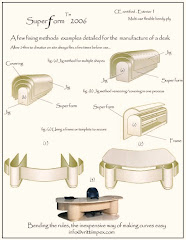Hello Roy,
Thank you for placing the blog on the CKD website, advertising 'A Lifetime's Journey - Old Man of the Tyne' - it's much appreciated, and I'm glad you enjoyed the story.
Regards,
Barry.
Barry Cram of Hebburn

To continue with a bit of spare time reading over the holidays,I have a really facinating tale writen by Hebburn on Tynes,Barry Cram,he sent it to me in a Word format,its far to large to post on this blog but if you fancy a good story to read,please contact me and I will send you an email copy.
use this address kits@comlumber.com
A message from Barry:
Hello Roy,
Please find attached the story 'A Lifetime's Journey'.
You're obviously very busy - though, if you get the time to read it, I hope you enjoy it.
Bye for now,
Barry.
Introduction
This story contains the adventures of a wealthy Geordie shipowner and his family, who, unbeknown to them, are about to set off from Newcastle Upon Tyne on an extraordinary journey of a lifetime - especially the shipowner’s grandson, Geordie Rigger, a very intelligent and upright young lad who has the greatest journey of all.
You will meet many lovely characters in this warm and passionate story, filled with happiness, sadness, humour, love and romance. Some of the banter between them, especially Peter and Thomas is very funny, and not to be missed.
Mysterious and unexplainable events occur, which bring out the most in the characters. A deep camaraderie is shown by all on board – a spirit of familiarity and trust found only between friends in such close proximity.
What makes a Geordie? For anyone who would like to find out, and get familiar with the well-known Geordie friendship, compassion and psyche, then this is the story for you – a great story for all ages to read. You might be surprised!
CHAPTER I
THE DISCOVERY
This story begins in the wide Pacific Ocean, on board a luxury American cruise ship - the S.S. Albatross - on its return voyage from Australia.
“Look-look!” The English passenger cried to his American friend.
“Gosh-darn it! What is it now?” The American replied, slowly fanning his white Stetson across his fat round face.
“Put your eye to the lens. Look man, look!” He ordered, as his monocle dropped from his thinly set face. “Tell me, what do you see?”
“Nothin’, darn it! Nothin’ but the wide blue sea?”
“To the left a bit old boy.” Said the Englishman, as he manoeuvred the ship’s telescope.
“I can’t see a darn...wait a minute...oh boy...it... it can’t be!”
“Exactly old chap;” said the Englishman, replacing his monocle; “an inhabited island, dear boy; I distinctly saw a person on the beach.”
“But that’s not possible; the ship’s brochure specifically states that there ain’t no inhabited islands on this part of the route!”
“Steward!” Cried the Englishman.
“G’day Sir, what’s your bid?”
“Be so kind steward, as to look through this telescope and tell us if you see anything of interest.”
The steward scanned the calm, wide ocean, and then breathed out a sigh of disbelief.
“Fair dinkum I do Sir; I’d better report this to the Cap’n.”
Holding his hat in one hand, while scratching his bemused head with the other, off he rushed towards the bridge - the last place he had seen the Captain.
The Captain put his binoculars to his eyes. “Impossible, steward! I’ve bin in this game long enough to know that there ain’t no inhabited islands in these parts.” He searched the horizon through the bridge window. “I’m sorry, steward, the heat’s probably playing tricks on you; there ain’t nothing out there.”
“But Cap ‘n, I’m not the only one; those two cobbers down there saw just as much as I did; we definitely saw something out there…out there…on the beach.”
“Don’t waste my time, steward.” Said the Captain, thumping his binoculars down on the table.
The Steward gently grabbed the elbow of the Captain’s jacket. “But Cap’n Wiseman, we can’t sail on if there’s a chance of someone being stranded out there.”
The Captain abruptly pushed away the pleading arm.
“Look, I’ve told you once too many, I’m the captain here; don’t ever forget it. It was probably a monkey or a goat. Now get out of here!” He added, punching his desk and busting a knuckle.
“Please Cap’n, have one more look!”
“You’re dismissed, steward; one more word, and I’ll have you for insubordination!”
Just as the steward was about to leave the bridge, he noticed an inquisitive crowd had gathered about the telescope, chattering much louder than the holidaymakers elsewhere.
“Look Cap’n’”
“What have you stirred up here, steward?”






























